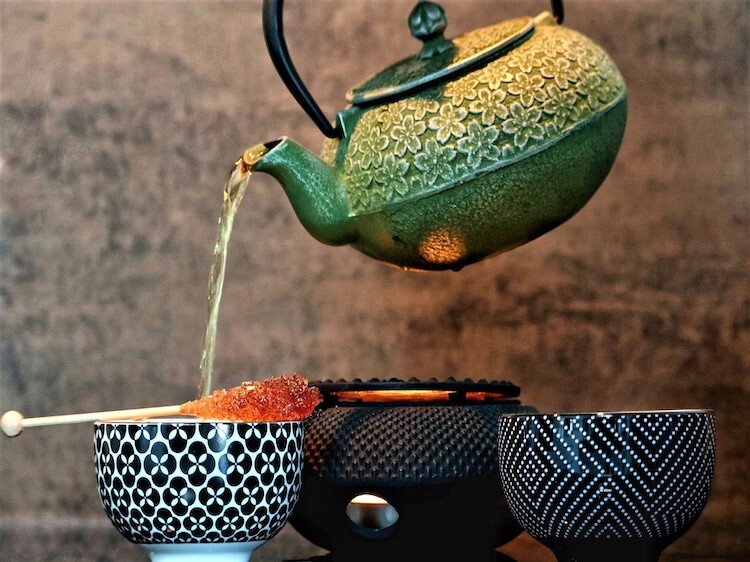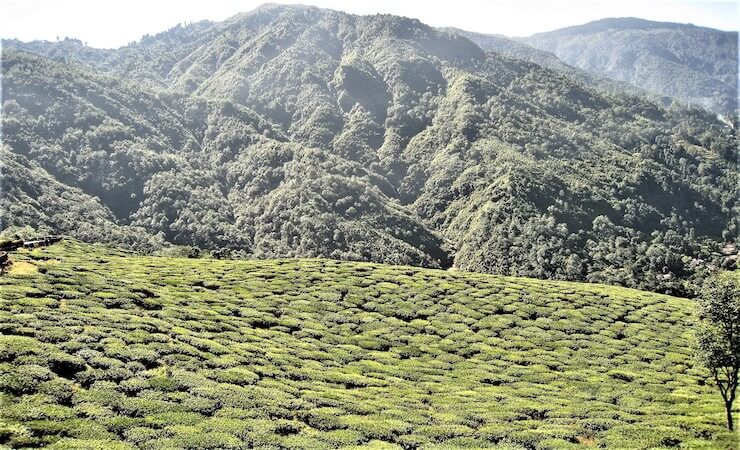
"Tea does our fancy aid
Repress those vapours which the head invade,
and keep that palace of the soul serene" - Edmund Waller
Tea, the Elixir of Life – is the most common and popular of all beverages. A cup of tea is what starts our day. It warms you, pacifies you, cheers you, calms you, tempers the spirit, awakens the thought and the list is endless of what it can do to you. Anytime, anywhere, any day, where there is tea, there is happiness.
They say in England, everything stops for tea, as Alice Walker in the Color Purple famously says “Tea to English is really a picnic indoors “, but for the Japanese, it is more than an idealization of the form of drinking. It is a religion of the art of life. The Japanese tea ceremony called Chanoyu, Sado or just Ocha is regarded as a means of physical, mental, and spiritual discipline, based upon the Zen principle of oneness with nature. A Choreographic ritual of preparing and serving Japanese green tea and is not just about drinking tea but more about the aesthetics.
Tea is considered a typical British drink. However, the Tea history dates to ancient China almost 5000 years ago. Lore has it that in 2732 BC, Emperor Shen Nung discovered tea accidently, when the leaves grown widely blew into his pot of boiling water. When he drank from the pot, he was taken aback by the pleasant taste and aroma, which left him with a warm feeling. Emperor named the brew “Ch’a” (the Chinese character meaning to check or investigate). The popularity of tea in China continued to grow rapidly from the 4th through the 8th century. Up to the mid-17th century, all Chinese tea was Green tea. With the increase in foreign trade, they found ways and means to ferment and preserve tea better, resulting in various varieties of Black Teas. Thus, China became the biggest exporter of Tea.
An attempt to an alternate supply of tea apart from China, the British ended up looking to grow the plant in several parts of occupied India. They had smuggled seeds and plantings out of China (Sinensis) and had also discovered a second variety growing in the wilderness in another Northeast state of Assam (Assamica).
Here, credit must be given to Mr. Robert Fortune, a Scottish botanist, who not only spied on China’s ancient technique of tea processing, but came back to India with knowledge, equipment, and a small team of experienced Chinese growers.
The cool winters, cloud coverage and sloped drainage that favoured the Sinensis (Chinese) variety, however, found its home in the hills of Darjeeling. Whereas the nearby Dooars and Terai regions found success with Assamica, as evidently it required warmer growing conditions.
Camellia Sinensis was first planted in the Darjeeling hills in 1841 by Archibald Campbell, who was then working for the East India Company, in this Jungle-covered, sparsely populated area to develop a hill station for use by the British stationed in Kolkata.
Darjeeling lies to the Northeast of India, amongst the great Himalayas, in the State of West Bengal. The annual rainfall in Darjeeling ranges around the 309cm mark and teas are grown at elevations ranging from 600 to 2000m above sea level. The incomparable quality of Darjeeling tea is the result of its locational climate, soil conditions, altitude, and meticulous processing.
The British established numerous tea plantations thereafter, with state-of-the-art infrastructure. After, Indian independence, however, these plantations were sold to businesses in India, and regulated under the laws of India. In the year 1953, a Tea Act was passed under which all the tea grown in India including Darjeeling was administered by the Tea Board of India.

Since, its establishment, the Tea Board has the sole control over growing and exporting of Darjeeling Tea. With the Trademark Act 1999, DARJEELING word and logo are registered certification of the Tea Board.
Therefore, only 100% pure Darjeeling Tea is entitled to carry the DARJEELING logo. If you are looking for an authentic Darjeeling tea of its distinct taste and aroma, you would highly benefit in looking for the Tea Board’s certification and license number, while making a purchase.
In Darjeeling, the tea leaves are harvested every five to ten days by plucking (with hands) the plants top two leaves and the bud (or just the bud for desired product), from March to November – a time span that is divided into four flushes, hence the same plantation can give you different varieties, depending on when they are harvested.
The delicate verdant first flush (March-May): consists of the first few leaves grown after the plant’s winter dormancy and produces a light floral tea with a slight astringency. Very gentle, mild, and light-coloured, this flush often produces the most expensive fabled White Tea.
The sweet and sultry second flush (May-June): leaves are harvested after the plant has been attacked by a leafhopper and the Camellia tortrix or the tea tortrix (a moth of the family Tortricidae), releasing compounds that give the leaves a distinctive muscatel aroma.
The Monsoon flush or the third flush (July-Sept): The rapidly growing leaves under the warm and wet monsoon weather, are often less flavorful and are mainly used for blending.
The Autumn or the fall flush (Oct-Nov): They are harvested before the winter dormancy sets in and produces teas similar but more muted to the second flush - herbaceous and soft muscatel flavour but with a fuller body and darker colour.
Darjeeling largely produces black teas (apart from White, Green, and Organic teas). Each plantation has their own factory and equipment’s, so that the processing can begin the same day as plucking. By limiting or prolonging the time of rolling, withering and oxidation depending on the flush is what gives Darjeeling tea it’s distinct character. Once, the processing is completed, the dried product is then shipped to Kolkata for auctioning, though some Estates do sell privately under contracts.
The Darjeeling tea when brewed gives a colour of pale lemon to rich amber. The brew is said to have remarkable varying degrees of visual brightness, depth, body, and aromas; therefore, it is best consumed without adding sweeteners and milk.
Originally a Chinese tea, brought to India by the Britishers, growing under the pristine Himalayan Mountain air of Darjeeling hills, with flavours of French grapes, that tastes more like a wine and less like a tea.
Darjeeling tea is but a poetry, infused with harmony, tranquillity and of stories untold. Stories of numerous Tea gardens and of the tea pickers, who skillfully pluck each tea leaf with love and care. As mysterious and exotic as the misty hills themselves, a tradition steeped in history and a mystique felt in every sip. Sweet, fragrant, astringent, minty – fresh mountain air flavors in equal measures, that is so endearingly savored by connoisseurs all over the World, thereby, rightfully earning the title “Champagne of Teas “.